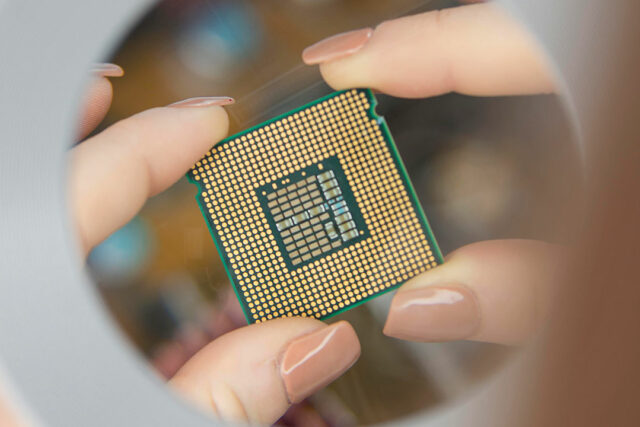FILIPINOS often think of potatoes in the context of snacks, like fries or chips. After all, the US potato industry supplies their products mainly to various snack food manufacturers in the Philippines.
Potatoes USA, the marketing arm of the US potato industry, introduced members of the media to different recipes that Filipino consumers can try. These all have potatoes as the main ingredient, using their fresh, frozen, or instant (dehydrated) potatoes, all found in Philippine supermarkets.
Mapo Tofu Potato Cheese Fries
Chef Kalel Chan of The Raintree Restaurant Group told BusinessWorld that a fun way to jazz up a serving of fries is to incorporate a spicy dish like mapo tofu to the mix. “I make this a lot at home and it really hits the spot,” he said.
INGREDIENTS
Cooking oil, 20 gm
Garlic, 20 gm
Ginger, 20 gm
Onions, 20 gm
Ground pork, 200 gm
Shoyu, 40 gm
Sake, 60 gm
Mirin, 20 gm
Sugar, 20 gm
Water, 200 gm
Sichuan ground pepper, 2 gm
Tobanjan bean paste, 60 gm
Sesame oil, 30 gm
Soft tofu, 200 gm
Grated cheddar cheese, 50 gm
Grated pepper jack cheese, 50 gm
Chopped spring onions, 20 gm
US seasoned crisp fries, 400 gm
Slurry, 10 ml
PROCEDURE
1. Heat oil and sauté garlic, ginger, onions, and ground pork.
2. Brown the ground pork and add sake, mirin, shoyu, sugar, Sichuan pepper, tobanjan paste, sesame oil, and water.
3. Simmer for 2 minutes and thicken with slurry.
4. When the sauce becomes thick add in the soft tofu.
5. Pour the mapo tofu on the side of the fried seasoned crisp fries and top it off with grated cheese.
6. Garnish with chopped spring onions.
Cheesy Potato Kaldereta Bake
This is a layer of potatoes with spicy tomato-based beef stew, topped with grated cheese then baked until melted. It is a dish for those seeking a twist on a classic Filipino dish.
INGREDIENTS
US fresh potatoes, sliced thinly and pre-boiled, 200 gm
Beef sirloin, pre-boiled and shredded, 500 gm
Garlic, minced, 4 cloves
Beef broth, 1 cup
Tomato paste, 2 tbsp
Tomato sauce, 1 cup
Liver spread, 1/2 cup
Siling labuyo (bird’s eye chili), chopped, 1 piece
Bay leaf, 1 piece
Carrot, small cubes, 1 piece
Pepper
Fish sauce
Cooking oil, 2 tbsp
Cheddar cheese, 1/2 cup
Mozzarella cheese, 1/2 cup
Basil for garnish
PROCEDURE
1. Cook the kaldereta: Saute onions and garlic. Add beef. Add carrots and cook until soft.
2. Add the tomato paste and cook.
3. Add the tomato sauce. Pour in the beef broth.
4. Add the liver spread. Let simmer and season with pepper and fish sauce, then add the bay leaf.
5. Place the thinly sliced potatoes at the bottom of an oven proof dish.
6. Top with the kaldereta mixture.
7. Combine the cheeses and place on top of the kaldereta mixture.
8. Broil in the oven for at least 10 minutes at 150C or until the cheese melts and has browned.
9. Serve hot.
US Potato Ramen
Mr. Chan recommended this next dish for those curious about the taste and texture of noodles made of potato. “It’s a very filling and satisfying dish consisting of handmade potato noodles with Sichuan dandan sauce,” he said.
INGREDIENTS
Standard potato granules, 200 gm
All-purpose flour, 250 gm
Salt, 3 gm
Egg, 4 pieces
Water, 200 ml
All-purpose flour (for dusting), 50 gm
Dandan sauce
Sichuan ground pepper, 3 gm
Sugar, 10 gm
Prepared chili oil (ryu oil), 20 gm
Grated garlic, 5 gm
Tahini, 100 gm
Soy sauce, 15 gm
Five spice, 1 gm
Hot chicken stock, 1 cup
PROCEDURE
1. Mix the dry ingredients together in a big stainless bowl, with a wire whisk, except the 50 gm of flour for dusting.
2. Make a well in the middle of the dry ingredients and mix the wet and dry ingredients together.
3. When it gets stiff, knead the dough by hand.
4. When a ball of dough is formed, rest the dough in the chiller for one hour.
5. After one hour, cut the ball into four and form each part like a ball.
6. Dust the table with flour and dust the four balls.
7. Flatten the balls one by one with a rolling pin.
8. When flattened to the desired thickness, fold and cut out the noodles by hand.
9. Dust with flour so it won’t stick together.
10. Boil water with salt and cook the noodles for two min.
11. Strain and pour the dandan sauce on top.
12. Add chicken stock if you want to make the dandan sauce thinner.
13. In a bowl, mix tahini, soy sauce, prepared chili oil, sugar, Sichuan pepper, grated garlic, and five spice.
14. Add hot chicken stock till the sauce is of the desired thickness.
Shrimp Skewer and US Tater
Finally, the shrimp and US tater drum cocktail is for those who want the taste of seafood with potatoes.
INGREDIENTS
US Tater Drums, 500 gm
Seasoning, 1 tsp
Lemon rind and juice, 1 tbsp
Garlic, minced, 1 tbsp
Salt, 1 tsp
Shrimp, 200 gm
Tomato, crushed, 1/2 cup
Chili ketchup, 1 tbsp
Horseradish, 1 tbsp
Sugar, 1 tsp
Salt, 1/2 tsp
Olive Oil, 1 tbsp
Lemon juice, 1 tbsp
Cilantro, 5 gm
Garlic, fried
PROCEDURE
1. Skewer the shrimps and season with seasoning, lemon, garlic, and salt.
2. Grill or bake at 350°F until the color turns pink. Set aside.
3. Spray US tater drums with olive oil and bake/air fry at 232°C (450°F) for 17 minutes.
4. Mix all the ingredients of the cocktail sauce and refrigerate.
5. Garnish the shrimp and US tater drums with garlic and cilantro.
6. Serve with cocktail sauce.
— B.H. Lacsamana















